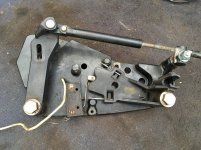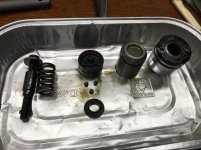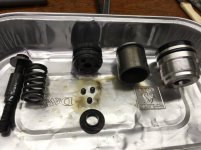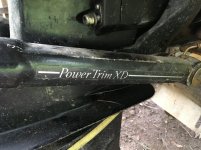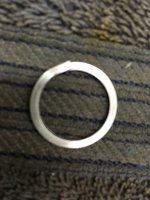I was out for a week, had some eye surgery done and will get more done next week. But in the meantime I tried to get as much information about the white/green shift interrupt connection as I could and I guess we can put this matter to rest now. I contacted Mercruiser several times on different issues and they were extremely helpful. First of all, they have all the records and specs of my particular boat based on the HIN number. They were able to give me all the serial numbers of the entire drive train and how they were delivered on day one. Here are the facts. The engine came from the factory with a TB IV ignition system, which eliminates the speculation that somebody may have upgraded it from a breaker/point system. In italics is a copy of the email response from Mercruiser:
Thank you for your email regarding MerCruiser engine serial number 0B827685. We appreciate the opportunity to respond to your questions.
The shift interrupt switch was only wired to the coil negative when we had points system and in that case the wires on the shift interrupt were not colored like this either. The schematic for Thunderbolt ignition is correct and we fed the module the white/green wire. All Thunderbolt systems were wired this way that is shown in the service manual #7. According to our records your engine originally came with a Thunderbolt IV ignition.
We hope this information is helpful. Should you have any other questions or concerns, please feel free to contact our office at 920-929-5040 between the hours of 7:30am and 4:30pm Monday through Friday, Central Standard Time.
Best regards,
Kim
Consumer Support Specialist
MerCruiser Customer Service
I also spoke with Sam, one of the tech advisers at Mercruiser, he said that it was quite possible that somebody mistakenly or out of ignorance or intentionally connected that wire to the (-) side of the coil, but it does not go there by design. If everything still worked as intended that could very well be possible and speaks well of the robust and tolerant quality of the TB system and nobody really knows why it was wired that way in the first place, even though it may look original because it's been like that for a long time.
To sum it all up, I will most certainly follow the advise of Chris and wire the engine the way it is supposed to be wired. I will make a neat T connector that will splice the shift interrupt switch wire in between the distributor and the ignition amp, just like the wiring diagram says. End of dilemma. Thanks for all your incredible input and constructive discussion.
Chris, enclosed is a picture of my shift plate, no terminal block. At least I don't see it. I guess that thing is like a pair of tonsils, not needed. I also tested the shift interrupt switch. It works as intended.




















